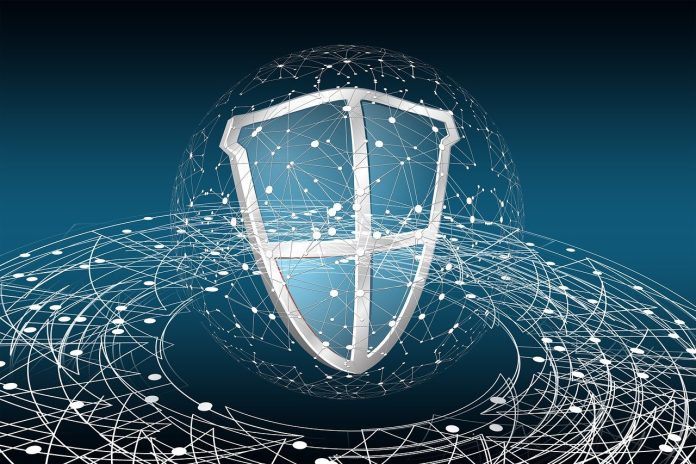In this post, you will learn about the role of Edge Networks in detecting and defending against DDoS threats.
Distributed Denial-of-Service attacks, or DDoS attacks as we’ve come to call them, have been the nemesis of internet services for decades.
They’re not flashy, the sort of thing out of the Hollywood-hacker movie—no shower of a screen with glowing green code—but they’re persistent, disruptive, and can stealthily take even the best-prepared companies down on their knees.
For years, organizations developed numerous defence systems, but perhaps the most promising transition within this fight is occurring within the internet’s very outermost layer: the edge.
It’s evolving the way by which we both sense and defeat DDoS assaults. They’re not simply another buzzword within the world of cybersecurity, but they’re starting to represent the vanguard capable of keeping an assault away from your systems before it reaches them. Let’s distinguish why the transition is essential, how it functions, as well as where it takes companies of every size.
Table of Contents
Understanding the Basics: DDoS and the Need for Faster Response
DDoS attack is essentially a deluge. Instead of a few users navigating your site or your app, an attacker uses thousands—often even millions—of hacked devices to saturate your servers with requests. The end result? Your systems slow to a crawl, your service is unavailable, and your customers become frustrated.
The challenging aspect of DDoS is it no longer takes a brilliant hacker to initiate one. For-hire botnets line the dark web, and the access barrier is low. That makes reaction time paramount.
The longer it takes to realize there is an attack, the more destruction it can cause. That is when the old-school approach—forwarding all traffic to a master data center for filtering—begins to fail.
Why Edge Networks Are Important?
Edge networks basically bring computational power nearer to the end-user, or rather, nearer to the attacker’s traffic, for instance. Rather than sending each packet of information all the way back to some central hub, the edge infrastructure enables filtering, analysis, and decision-making to take place much further along the route.
When you’re dealing with DDoS attacks, this is relevant because speed is of the essence. The quicker you can catch an attack and filter it out on the edge, the malicious traffic doesn’t even get the opportunity to build up on your primary servers. It’s like having security checkpoints at every entrance instead of letting everyone into the lobby before checking IDs.
The outcome is reduced stress on your core infrastructure, increased uptime for authorized users, and decreased possibilities of a complete service blackout.
READ ALSO: How ERP Project Recovery Consultants Rescue Failing Projects and Boost ROI
Distributed Monitoring for Early Detection
One of the biggest strengths of the edge networks is the fact that they’re distributed networks. DDoS attacks often come from geographically disparate locations, so observing them out of a single vantage is somewhat equivalent to observing a stadium full of exits from a single seat: you’ll definitely miss something.
With edge nodes everywhere, suspicious traffic patterns can be detected early and locally. If a node in Singapore starts seeing unexpected request spikes, it doesn’t need to wait for some master server back in Virginia to confirm the problem. It can start filtering or throttling right away.
This real-time, decentralized approach also helps in distinguishing between legitimate traffic surges—like during a product launch—and malicious traffic.
Mitigation at the Edge
Once suspicious traffic is detected, edge networks can act fast. They can block requests, rate-limit certain IPs, or even reroute traffic through scrubbing centers without affecting legitimate users. Because this happens close to the source, it minimizes latency for the real visitors while quietly neutralizing the attack traffic.
There is another advantage, scalability. Centralized protections will become a bottleneck when there is a big attack, but edge-based mitigation spreads the load across several locations. Even if a node is heavily attacked, other nodes do not get affected and keep on serving users.
Minimizing Collateral Damage
Traditional DDoS protection often means taking drastic measures, for instance, shutting down the access to certain territories or ranges of IPs.
Although it is successful in stopping the attack, it has the potential to disappoint genuine users unlucky enough to be located within the blocked range. Edge networks can filter more accurately.
Rather than coming at it with a sledgehammer, they can take a scalpel approach—only inhibiting the bad actors while allowing the good traffic to pass through. The pinpoint approach minimizes collateral damage and preserves customer trust during an attack.
The Bottom Line
DDoS threats will not disappear; rather, they will transform. But so will the defense. By extending detection and mitigation to the edge, organizations will be able to respond quicker, with greater accuracy, and with minimum disruption to their legitimate users.
Along these lines, edge networks aren’t some new piece of technology, but a new way of doing cybersecurity: stop the attack before it gets to your front door. For businesses founded on uptime and consumer confidence, it’s an adjustment worth making.
INTERESTING POSTS
- Managing Open-Source Vulnerabilities Like A Pro!
- Top 5 Cybersecurity Threats That eCommerce Websites Should Watch Out For
- Understanding The Windows 10 Ransomware Protection
- How To Prevent A DDoS Attack On Your WordPress Site
- Top 5 DDoS Attack Challenges For Telecom Companies
- How Dedicated IP Addresses Improve Security for Distributed Workforces
About the Author:
Daniel Segun is the Founder and CEO of SecureBlitz Cybersecurity Media, with a background in Computer Science and Digital Marketing. When not writing, he's probably busy designing graphics or developing websites.







